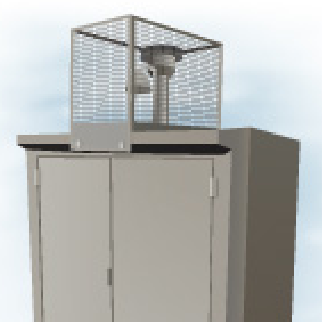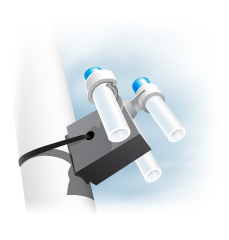Data and statistics
The KentAir data selector contains options for you to retrieve data (measurements and simple statistics) relating to Air Quality across Kent and Medway from 1994 to today.
There are two types of monitoring data available within the Kent and Medway Air Quality Network: Automatic Monitors measure hourly pollutant concentrations from a continuous stream of air pumped through the analysers. Data are collected each day by modem from the analysers stor-ing the information at each site. The data go back as far as 1994 from the monitoring sites ac-cessible here.
Diffusion Tube Monitors measure passively, exposure of the tube is monthly. Samples are collected by chemical reaction on a substrate within the tube and then sent off to a laboratory for analysis. Final pollutant concentrations are calculated from these results.
The statistics in the database are calculated from these measurements. Emissions estimates - the amount of each air pollutant produced by a range of activities - can be obtained from the National Atmospheric Emissions Inventory (NAEI).
Monitoring data and exceedance statistics:
There are two major types of data; automatic and non-automatic measurement undertaken in the Kent Air Quality Monitoring Network. Data can be downloaded from the data selector tool by firstly selecting:
- Measurement Parameters Group (Automatic Monitoring Data or Diffusion Tube Data)
- Measurement type (Measured data and simple statistics or Annual Exceedances & Statistics)
Then by selecting:
- Pollutants
- Measurement period
- Measurement sites
Email addresses can be entered to allow data to be delivered directly by email.
Exceedance statistics
Exceedance statistics provide information about concentrations above a specific threshold value. The exact concentration and the metric used varies by pollutant and purpose. A selection of commonly used examples are:
- UK Air Quality Objectives
- EU Limit and Target Values
- Critical Loads
- The health-effects based system of four bands and a 1-10 index
- Indicators of Sustainable development - the average number of days per site on which pollution levels were above National Air Quality Standards
Data Verification and Ratification
Data Verification and Checking is carried out on an ongoing basis and is nominally a process to "clean-up" the initial provisional data. Any corrections to the data made during the process are automatically uploaded (still as Provisional at this stage). There are also manual checks carried out by air quality monitoring experts on a daily basis.
All data remain provisional and subject to further QA/QC checks until they have been fully ratified. Ratified data may differ from raw and provisional data.
Data Ratification is a detailed manual check of the data set carried out on a quarterly basis for the KMAQN and AURN sites covered by the full QA/QC process.
Data ratification requires a longer-term view and the judgement of experienced air quality scientists who will have to consider the validity of data in the light of many factors. The ratifier reviews all calibration data, information from analyser services and repairs and any other information available for the site or analyser over the whole ratification period.
In addition, the results from the QA/QC audits are incorporated to take account of any problems detected during the QA/QC audits. Which ensures that ratified data are traceable to UK national and international gas calibration standards. The KMAQN audits are carried out annually, for the AURN stations, they are carried out on a six-monthly basis.
The verification and ratification process ensures the best possible accuracy of air quality data for public information, and for scientific research purposes. It also underpins the success of the Local Air Quality Management Process, as well as helping KMAQN to fulfil its statutory requirements.

